
Some places don’t just welcome you—they pull up a chair, pass the local wine, and ask how long you’re staying. If you’ve ever craved a slower rhythm, deeper connection, and a chance to belong somewhere beautiful, you’re not alone.
While the world chases crowded hotspots, there are hidden corners offering 70% discounts, open arms, and community-led programs that make you part of something real. This isn’t about escaping—it’s about arriving, fully.
These off-season gems aren’t just cheaper—they’re warmer, quieter, and surprisingly generous. Ready to find out where the locals hope you’ll stay longer? Let’s dive in.
1. Madeira, Portugal
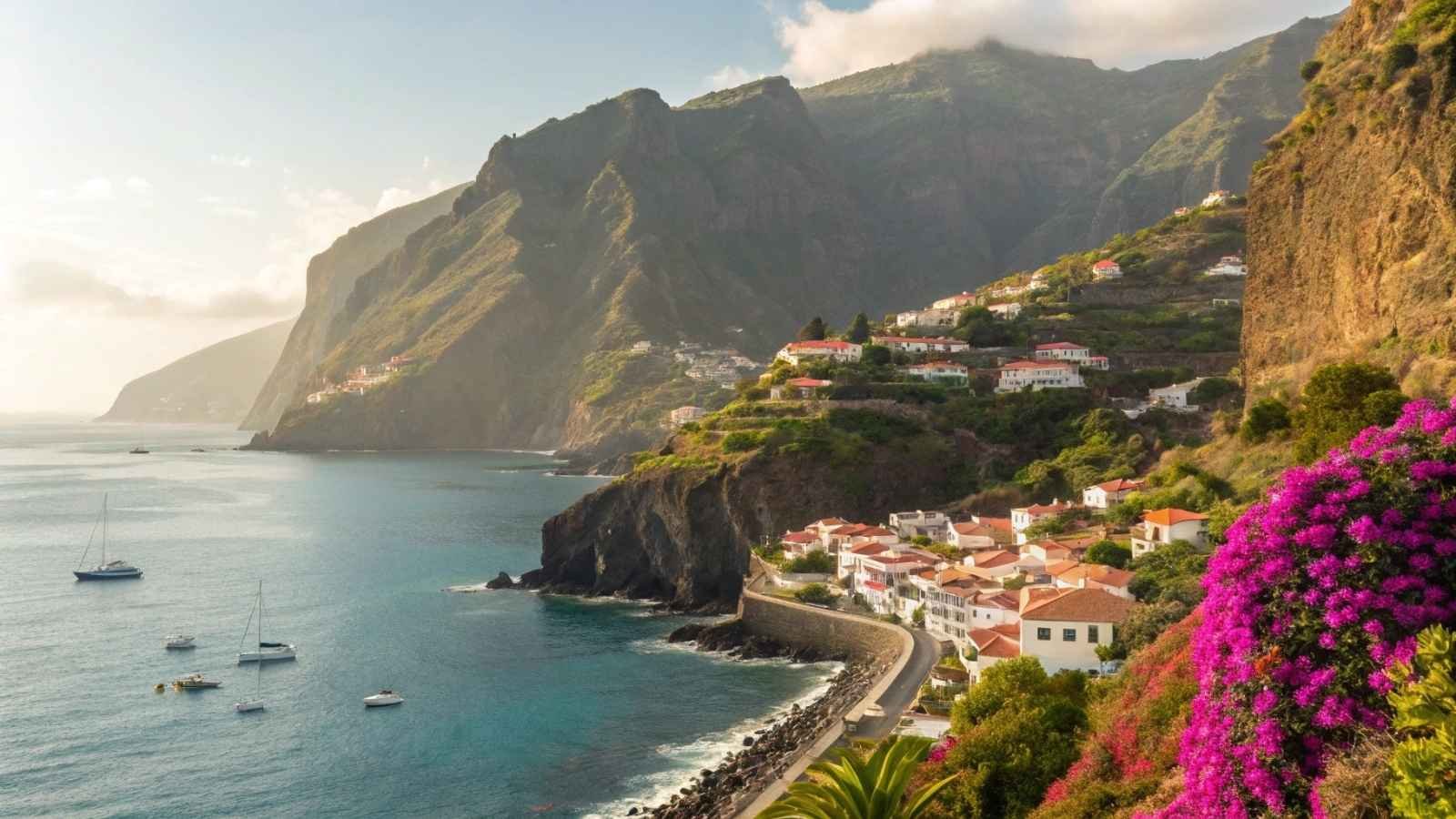
Often dubbed the “Hawaii of Europe,” Madeira is more than just its year-round spring weather and lush volcanic cliffs. In the off-season—roughly late fall through early spring—you’ll find a dramatic drop in prices and a surprisingly warm welcome from locals. The regional government and local enterprises have welcomed long-term visitors, setting up “Digital Nomad Village” programs in towns like Ponta do Sol, a spot to plug into a coworking hub, and within days, no longer feel like a stranger in a fairly tight-knit island community.
What’s special here is how locals actively invite newcomers to join in festivals, cooking classes, and hiking groups. Off-season doesn’t mean empty; it means authentic. The island’s walking trails become more meditative, cafés less crowded, and life noticeably slower. Yet you’re never bored. Imagine sipping poncha (a local rum drink) while someone teaches you how to pronounce “espetada” over grilled skewers at a neighborhood barbecue.
Plus, Madeira offers up to 70% discounts on long-term stays, especially in Funchal and surrounding villages. Utility costs are low, and there’s a strong expat support network that doesn’t isolate itself from the locals—it blends in beautifully.
Key Info:
- Best Months to Visit Off-Season: November to March
- Community Integration Programs: Digital Nomad Village, local language exchanges, expat-volunteer crossover programs
- Estimated Cost Reduction: 50–70% on rentals and food
- Why Locals Are Welcoming: Government-supported remote work initiatives and tourism diversification
- Visa Info: 90-day Schengen access, renewable or extendable via D7 or nomad visa routes
2. Bali, Indonesia

Yes, Bali. But not the overrun beach clubs of Canggu in high season, off-season Bali is a different world. Think Ubud after the rains begin, when the air smells like damp earth and incense, and the tourists thin out enough that locals invite you to ceremonies and local market trips without a second thought. It’s a deeply spiritual place when you slow down.
During the off-season (which locals call the “green season”), homestays and boutique villas often go for 70% less than their peak prices, and you’ll find long-term arrangements that include meals, laundry, and even scooter rental. The Balinese community has a rich culture of sharing and openness, especially if you show even a little interest in their language or religion.
While in the West people often “tolerate” long-stayers, in Bali, if you make an effort, you’re quickly folded into the rhythms of the place. One expat described it as, “Living in someone else’s dream, and realizing it might be your own too.”
Key Info:
- Best Months to Visit Off-Season: November to March
- Community Integration Programs: Cultural immersion classes, yoga/retreat centers offering local outreach programs
- Estimated Cost Reduction: 60–70% on lodging, food, and transportation
- Why Locals Are Welcoming: Deep-rooted Hindu traditions of hospitality and exchange
- Visa Info: 60-day tourist visa (extendable) or social-cultural visa for longer stays
3. Crete, Greece
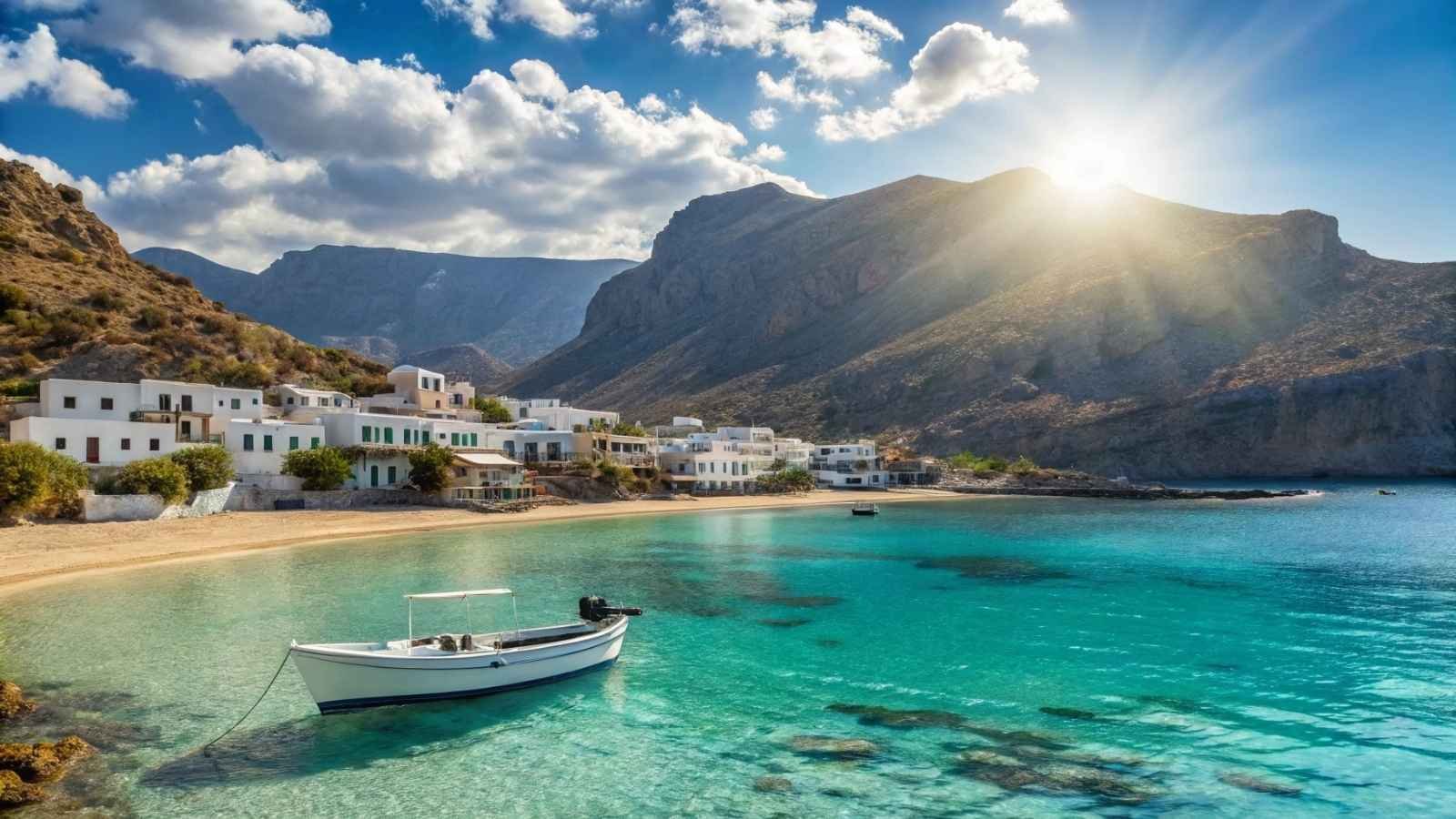
Crete is the kind of place where you show up for lunch and leave after dinner because Yia-yia (grandma) decided you’re family. In the off-season, especially in rural villages or coastal towns like Agios Nikolaos and Chania, the crowds vanish, and what’s left is a welcoming, fiercely proud local population that sees long-term visitors as a sign of trust.
Crete offers significant seasonal discounts on rent, often 50–70% off, particularly in areas where many homes sit empty in winter. Local councils have also started hosting language nights and cooking collectives, where locals and foreigners learn from one another. If you like goats, olive oil, and Raki-fueled storytelling, you’re in the right place.
What makes Crete stand out is its dual identity: fiercely independent (they have their music, food, and dialect) but also open-hearted and proud to share it. There’s a rhythm to life here that quickly absorbs you. Walk into a taverna once and they’ll remember your name.
Key Info:
- Best Months to Visit Off-Season: November to April
- Community Integration Programs: Cretan cooking classes, intergenerational festivals, local volunteer networks
- Estimated Cost Reduction: 50–70% on rentals and dining
- Why Locals Are Welcoming: Rural revitalization programs and cultural pride
- Visa Info: 90-day Schengen access; D visa options for long stays or remote work
4. Oaxaca, Mexico
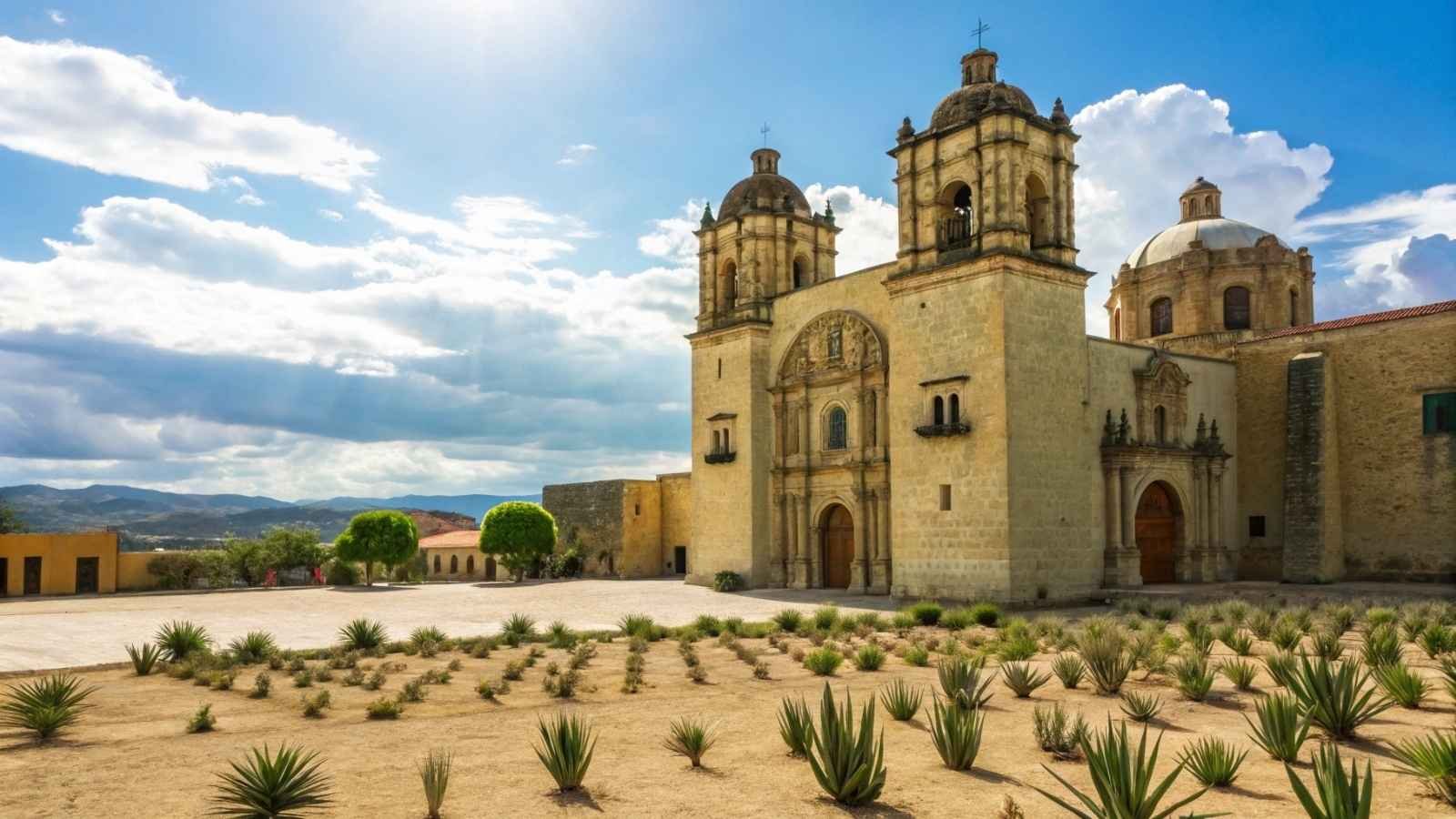
Oaxaca is more than mole and mezcal. It’s an artistic, fiercely rooted region where indigenous cultures are still alive and locals actively protect and share their heritage, especially with those who stay longer and participate respectfully. In the low season—especially after Day of the Dead and before Holy Week—you can enjoy an intimate version of the city, free of festival congestion.
The community here runs integration tours, artisan workshops, and long-stay language exchanges, and there are entire barrios where long-term visitors are seen as part of the evolving ecosystem. Rent prices drop dramatically, and many landlords offer “cultural discounts” to those involved in education, health, or volunteer work.
It’s a place where, if you show curiosity, people go out of their way to include you, whether it’s teaching you Zapotec weaving or inviting you to a family celebration in the countryside. And let’s be real—the food, weather, and deep sense of place are worth every peso.
Key Info:
- Best Months to Visit Off-Season: Mid-November to March
- Community Integration Programs: Artisan collectives, language immersion schools, volunteer programs
- Estimated Cost Reduction: 50–70% on rent and local services
- Why Locals Are Welcoming: Cultural pride and need for respectful, sustainable tourism
- Visa Info: 180-day tourist visa (easily renewable with border runs)
5. Algarve, Portugal
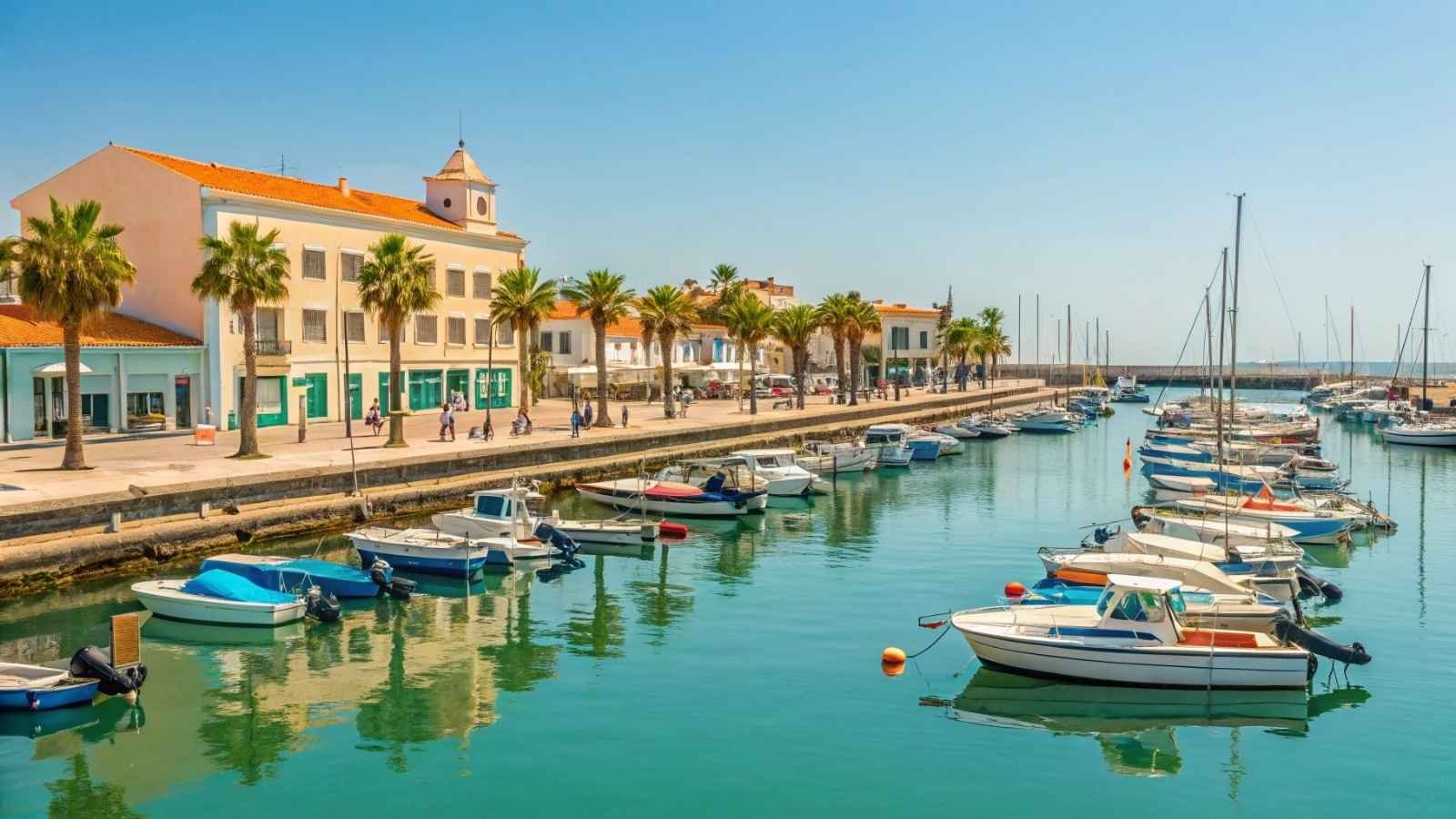
The Algarve is often thought of as a summer escape, but during the off-season, its fishing villages, golden cliffs, and whitewashed towns offer a peaceful kind of magic. From November through March, it’s not just quieter—it’s substantially more affordable, with many furnished rentals available for 70% less than high-season rates.
What sets the Algarve apart isn’t just the cost but the incredible warmth of the locals during this slower time. In villages like Tavira, Lagos, and Aljezur, bakeries still open early, markets buzz, and community centers open their doors to newcomers. Local clubs for painting, surfing, hiking, and even storytelling bring everyone together, especially in off-peak months.
There are also multiple regional initiatives aimed at attracting off-season residents, especially retirees and digital workers. You’ll find structured integration through language cafes, cultural history walks, and beach cleanups where friendships are naturally formed.
Key Info:
- Best Months to Visit Off-Season: November to March
- Community Integration Programs: Town council events, language clubs, local co-ops
- Estimated Cost Reduction: 60–70% on rentals, 40% on food and leisure
- Why Locals Are Welcoming: Government incentives and cultural tourism plans
- Visa Info: Schengen 90-day stay or long-term D7 visa for remote workers and retirees
6. Siargao, Philippines

Known as the “Surfing Capital of the Philippines,” Siargao has evolved from a backpacker secret to a more developed island, with a twist: off-season (rainy season) transforms it into a peaceful haven where locals happily share their slice of paradise with those who stay longer.
During the low months, the surfing spots are still active (but less competitive), restaurants drop prices, and homestay owners offer deep long-stay discounts—often up to 70% off. More than that, the locals genuinely appreciate those who embrace the island’s pace and care about its future. Community cleanups, coral reef conservation, and language-exchange nights happen weekly, and it’s easy to get invited in just by showing up.
There’s something disarming about Siargao’s friendliness. Everyone knows everyone, and if you return a second time, chances are someone will remember you. It’s not unusual to be invited to someone’s family lunch just because you asked about a mango tree.
Key Info:
- Best Months to Visit Off-Season: November to February (wet season but warm)
- Community Integration Programs: Local NGO volunteering, free surf clubs for kids, Tagalog and Bisaya exchange classes
- Estimated Cost Reduction: 60–70% off stays, activities, and food
- Why Locals Are Welcoming: Island-based community values and eco-tourism education
- Visa Info: 30-day entry visa, extendable up to 36 months
7. Azores, Portugal
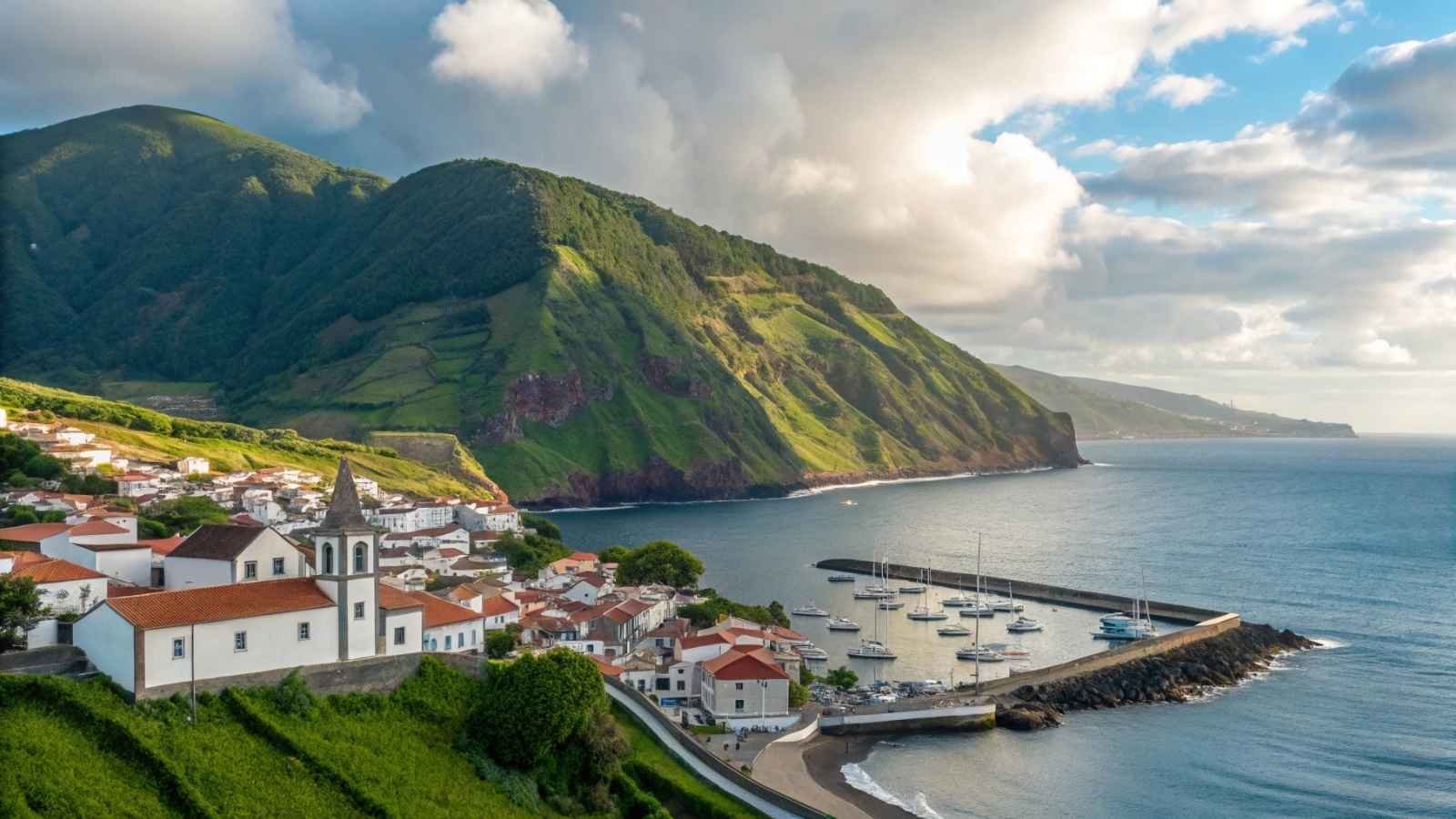
The Azores are like Portugal’s quiet little secret in the middle of the Atlantic—green, rugged, and friendly. Off-season (fall to early spring) turns these islands into a misty, cozy dreamscape where nature is still center stage, but now you can enjoy it without the summer crowd.
São Miguel, the largest island, has led the way with eco-tourism and community integration programs, especially in smaller towns like Furnas and Ribeira Grande. Many long-stay visitors stay with families or in community-run guesthouses at rates discounted up to 65–70%. You’ll also find locals offering hands-on learning in traditional cheese-making, sustainable farming, and whale-watching initiatives.
Locals here are curious and welcoming, especially if you show a bit of Portuguese effort. A walk around town can easily turn into a coffee invitation, a drive, or a conversation about island history. It’s slow travel at its absolute best.
Key Info:
- Best Months to Visit Off-Season: October to March
- Community Integration Programs: Agricultural co-ops, language cafés, nature conservation projects
- Estimated Cost Reduction: 50–70% on housing, tours, and food
- Why Locals Are Welcoming: Island life, sustainability focus, government incentives
- Visa Info: 90-day Schengen access, extendable with D7 residency options
8. Penang, Malaysia

Penang, especially George Town, offers a blend of heritage, food, and multiculturalism that few places can match—and in the off-season (especially during the monsoon months), it becomes a cultural goldmine without the price tag.
Rents drop steeply—sometimes as much as 60% off peak prices, especially in pre-war colonial homes or newer studio apartments. What’s even better is how engaged the community is. From local cooking clubs to Peranakan craft circles, integration isn’t an add-on—it’s expected. Locals are often bilingual (or trilingual), and there’s a real openness to sharing traditions and stories with respectful visitors.
Food is the great equalizer here, and it’s a surefire way to connect. Don’t be surprised if your roti canai breakfast turns into a full conversation about everything from street art to politics to grandmother’s curry secrets.
Key Info:
- Best Months to Visit Off-Season: May to October (inter-monsoon season with fewer tourists)
- Community Integration Programs: Cultural workshops, heritage walk groups, volunteer language teaching
- Estimated Cost Reduction: 50–60% on accommodations and local services
- Why Locals Are Welcoming: Historical melting pot culture, tourism decentralization programs
- Visa Info: 90-day tourist visa, extendable; Malaysia My Second Home (MM2H) long-stay visa available
9. Salento, Colombia
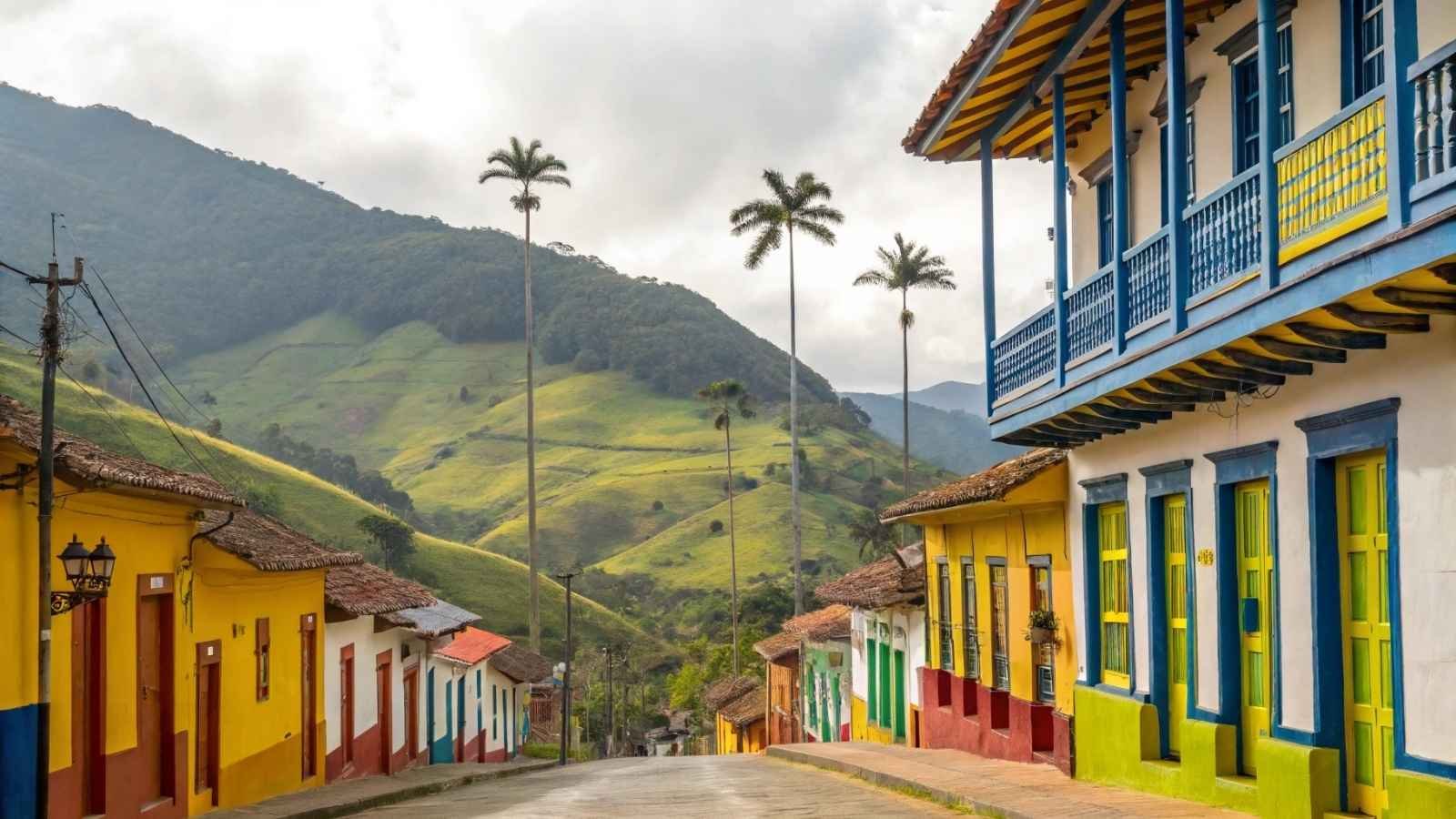
Nestled in Colombia’s coffee region, Salento is a rainbow-painted town surrounded by lush hills, hummingbirds, and the famous wax palms of Cocora Valley. While the weekends can still be touristy, off-season weekdays and long stays give you a completely different view: quiet streets, open arms, and steep rental discounts.
Colombian hospitality is legendary, and it’s even more present here, especially when locals see you’re sticking around. Hostel owners convert to month-to-month rentals, often at 70% lower rates than during tourist spikes, and invite long-termers to coffee cuppings, local events, and even horseback rides into the countryside.
There’s also a grassroots movement in Salento to involve foreigners in eco-tourism, permaculture, and local school programs, with Spanish-English exchange tables popping up in community halls. You won’t be bored—and you definitely won’t be invisible.
Key Info:
- Best Months to Visit Off-Season: April–May and October–November (between local holidays and dry season)
- Community Integration Programs: Coffee farm work-trade, language exchanges, art-for-kids outreach
- Estimated Cost Reduction: 60–70% off housing, 50% off food/activities
- Why Locals Are Welcoming: Strong community ethos and tourism as community development
- Visa Info: 90-day tourist visa, extendable up to 180 days per year
10. Naxos, Greece
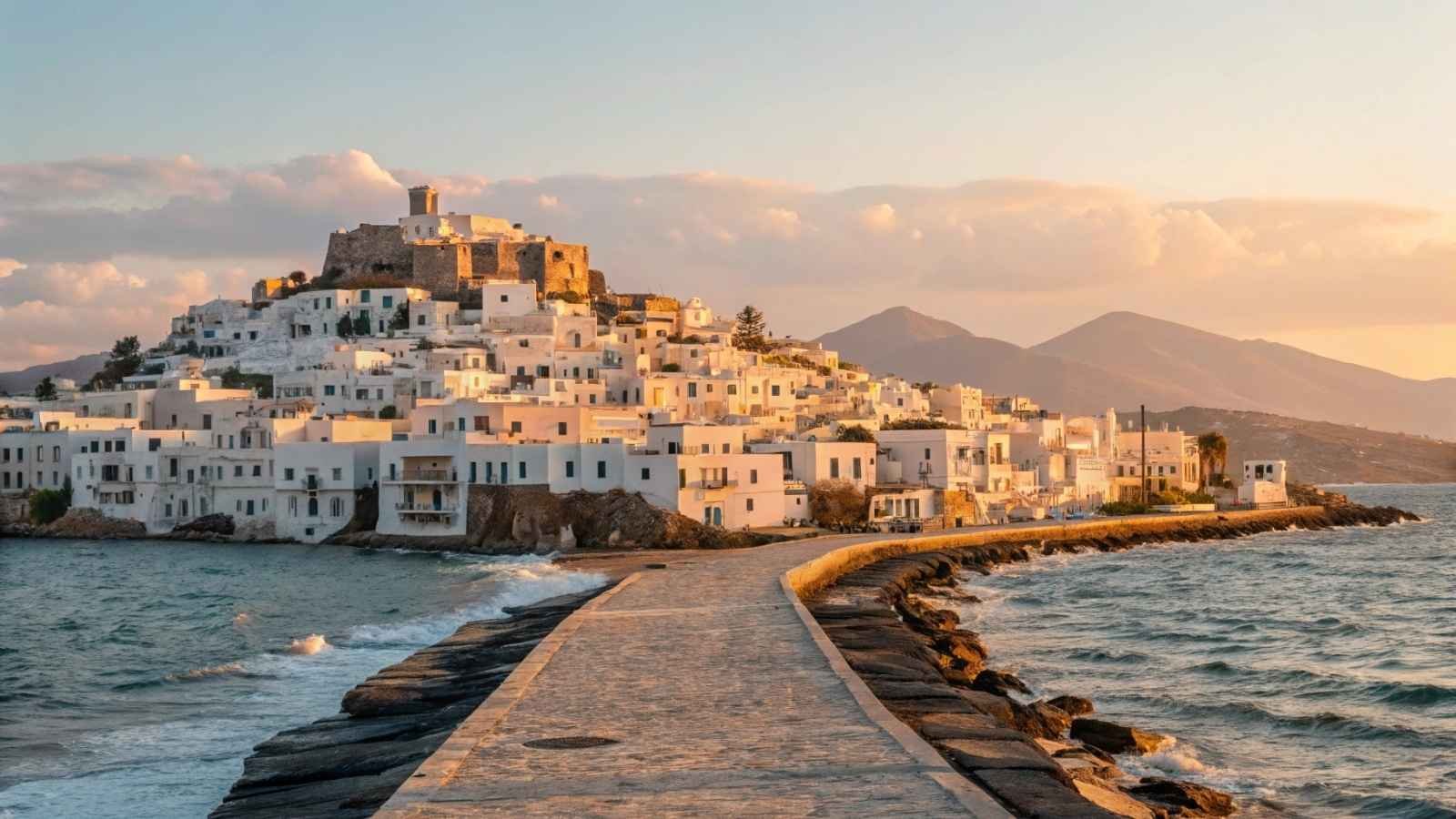
While Santorini and Mykonos steal the spotlight, Naxos is where the Greek soul lives on year-round. In the off-season, the island empties of cruise traffic, and those who remain are locals and long-stayers who share a strong sense of community and resilience.
Winter brings quiet harbors, cheap rent (often 65–70% less than summer), and slower, richer experiences. You’ll find yourself in conversations over shared tsipouro, attending folk dance rehearsals, or helping with olive harvesting. Naxos has started promoting “authentic winter tourism,” aimed at drawing respectful long-term guests instead of high-season partiers.
It’s also a food-lover’s paradise—cheeses, wines, meats, and produce are all locally sourced, and many families run micro-businesses where you can learn hands-on. Locals often express pride that Naxos isn’t just “beautiful”—it’s livable.
Key Info:
- Best Months to Visit Off-Season: November to April
- Community Integration Programs: Farming internships, cultural clubs, weekly expat meetups
- Estimated Cost Reduction: 60–70% off rent, meals, and transport
- Why Locals Are Welcoming: Pride in year-round life and tourism alternatives
- Visa Info: 90-day Schengen visa, D visa options for long stays or retirement
11. Bocas del Toro, Panama

Bocas del Toro doesn’t try to be polished—it’s raw, vibrant, and pulsing with Afro-Caribbean influence and reggae-infused island vibes. But in the off-season (rainy months), the beat slows down. The crowds leave, but the community spirit comes alive. Long-term visitors find themselves welcomed into beach cleanups, music nights, and neighborhood food co-ops.
Local guesthouses and eco-lodges, especially on Isla Bastimentos and Isla Carenero, slash rates by up to 70% during the green season, and many offer bundled deals that include meals and tours. But it’s not just about deals—Bocas is a place where everyone knows when you’ve arrived, and if you stay a while, they expect to know your story too.
Whether you’re sipping cacao with a Ngäbe-Buglé artisan or helping plant mangroves with a marine conservation group, there’s a natural pull toward community life here. It’s easy to fall in love with Bocas—not as a fantasy, but as a place where real connections grow as fast as the jungle around you.
Key Info:
- Best Months to Visit Off-Season: May–August, November (between peak and dry seasons)
- Community Integration Programs: Coral reef restoration, language tandem clubs, Afro-Caribbean heritage events
- Estimated Cost Reduction: 60–70% on lodging, activities, and water taxis
- Why Locals Are Welcoming: Long-standing multicultural culture and reliance on responsible long-term tourism
- Visa Info: 180-day tourist visa for many nationalities, with flexible residency options
12. Puglia, Italy
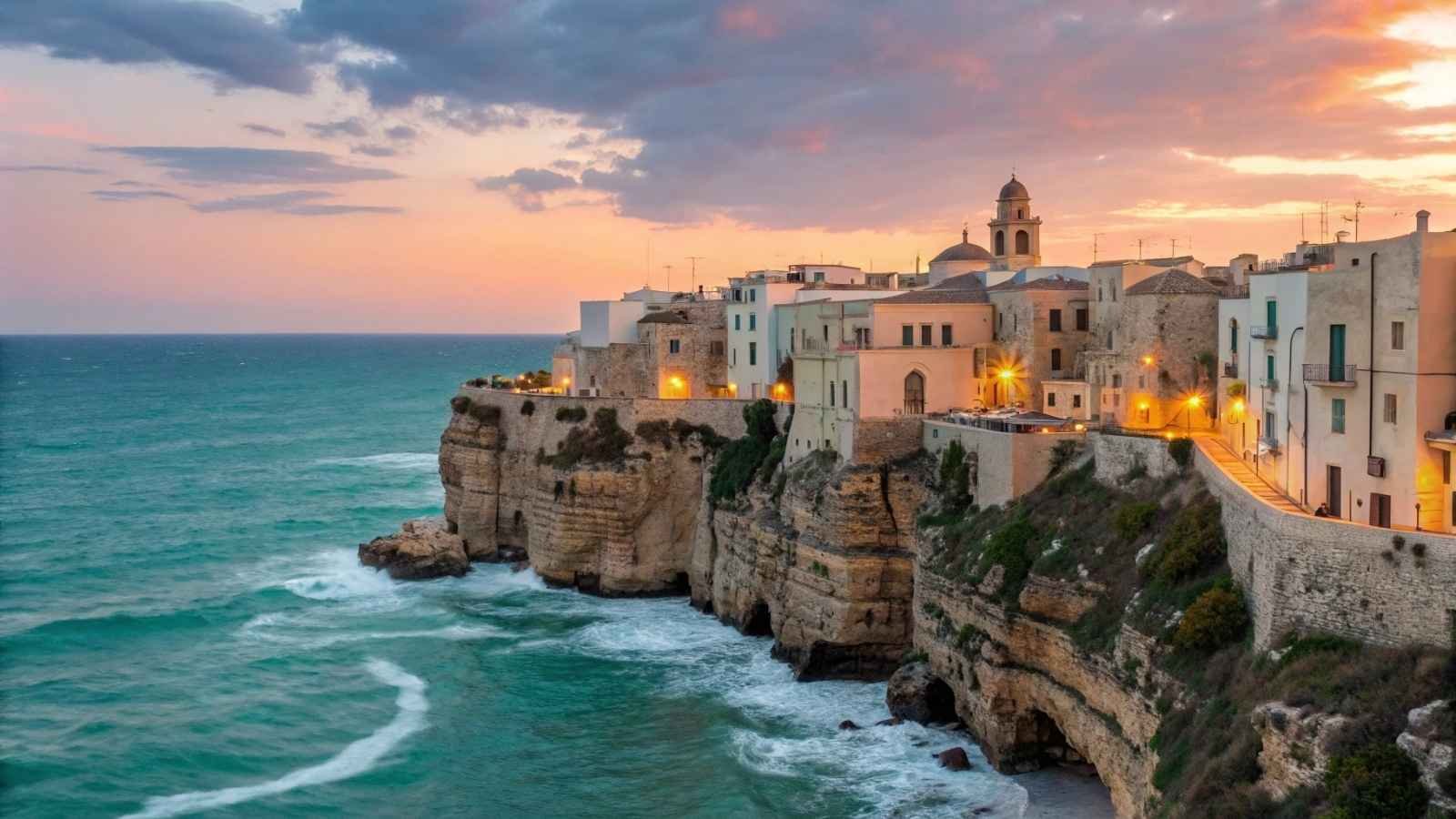
If Italy had a secret garden, it would be Puglia—a southern region of olive groves, whitewashed hill towns, and seaside villages kissed by the Adriatic. During high season, it can get pricey and packed. But come fall and winter, something beautiful happens: the tourists disappear, and life becomes intensely local again.
In off-season towns like Lecce, Ostuni, and Monopoli, rent prices plummet by up to 70%, and entire historic homes become affordable for long-term stays. This is also when the real Italy shines through—with community markets, seasonal harvest feasts, and a quiet rhythm that feels like it hasn’t changed in centuries.
Pugliesi are proud of their region’s rustic charm, and they welcome those who want to stay, eat, learn, and contribute—not just take Instagram photos. Many towns now offer language courses, cooking apprenticeships, and even small business mentorships for newcomers interested in becoming part of the local economy or creative scene.
Key Info:
- Best Months to Visit Off-Season: October to March
- Community Integration Programs: Regional food collectives, artisan apprenticeships, Italian language clubs
- Estimated Cost Reduction: 60–70% on housing and local services
- Why Locals Are Welcoming: Regional revitalization, creative economy push, and cultural pride
- Visa Info: Schengen 90-day access; elective residency visa or D7 visa for long-term stays






